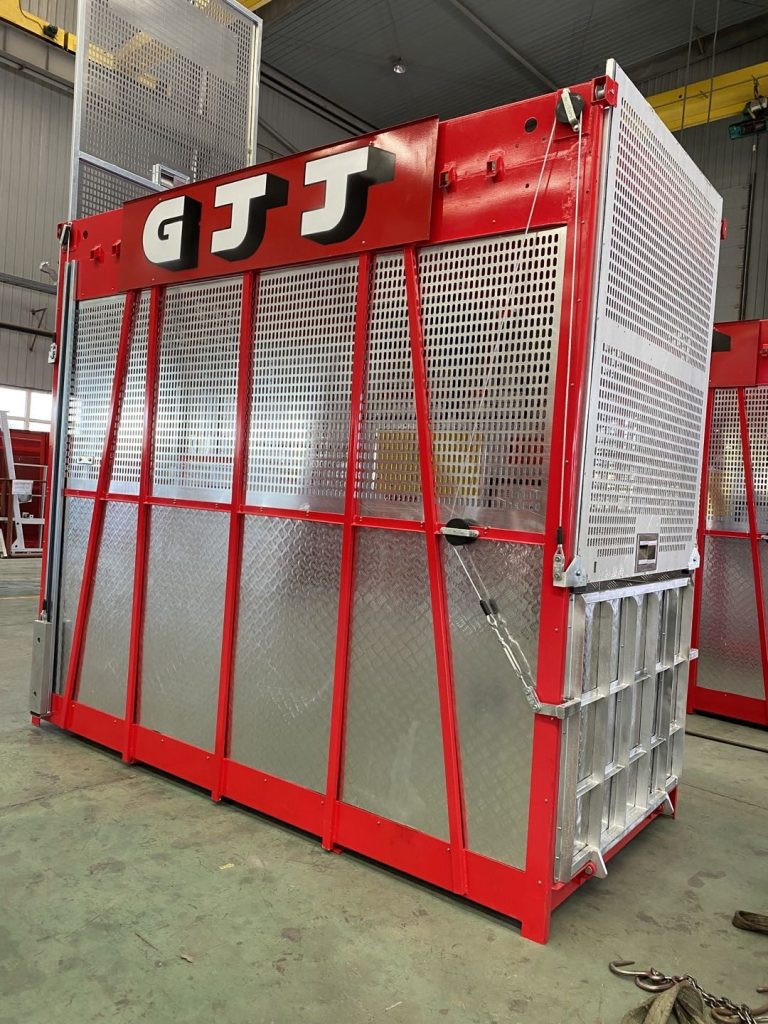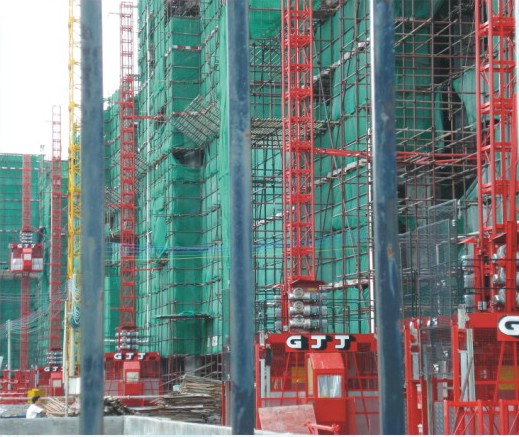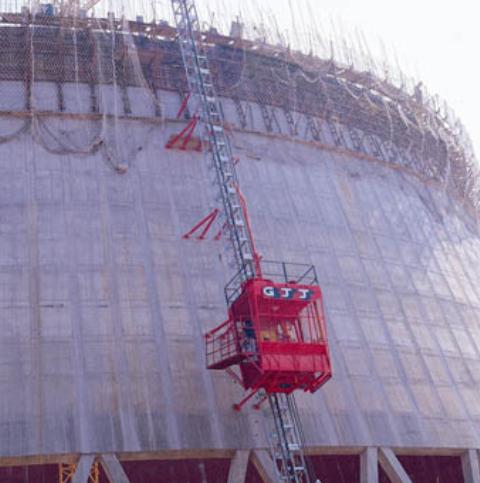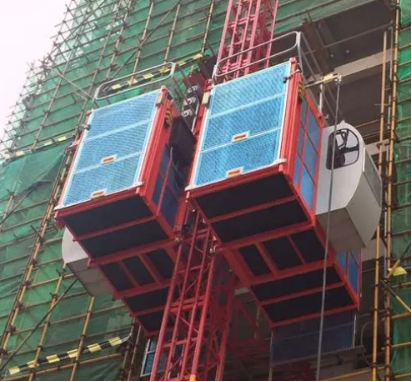Construction hoists are indispensable tools in modern construction, serving as vertical lifelines for transporting materials and personnel to various levels of a building site. These mechanical marvels significantly enhance efficiency and safety, streamlining the construction process. However, improper installation can compromise these benefits and pose serious risks.
This guide delves into the intricacies of hoist installation, providing a detailed, step-by-step approach that prioritizes safety and adherence to local regulations. By following these guidelines, construction professionals can ensure the secure and reliable operation of their hoists, safeguarding both workers and the project itself.
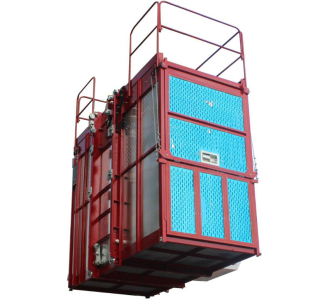
Understanding Construction Hoists
Different Types of Construction Hoists
| Mast Climbing Work Platforms (MCWPs) | Designed for transporting workers and materials up and down the exterior of a building. Mounted on a vertical mast that can be climbed along the structure. Offer flexibility and versatility for various facade work. |
| Material Hoists | Specifically designed for transporting construction materials, such as bricks, mortar, and lumber. Typically enclosed to protect materials from weather conditions. Often used in conjunction with other hoists to optimize material flow. |
| Passenger Hoists | Used for transporting workers to different levels of a building, especially in high-rise construction. Enclosed and equipped with safety features like emergency brakes and alarms. Provide a safe and efficient means of vertical transportation for workers. |
Key Components of a Construction Hoist
| Mast | The vertical structure that supports the platform and counterweight. |
| Platform | The working area where materials or personnel are transported. |
| Counterweight | A heavy weight that balances the load on the hoist, ensuring smooth operation. |
| Winch: | The mechanical device that raises and lowers the platform. |
| Motor | Provides the power to operate the winch. |
| Controls | The system that allows operators to control the hoist’s movement. |

Pre-Installation Considerations
| Site Assessment and Preparation | Site Survey | Conduct a thorough site survey to identify potential obstacles, such as existing structures, power lines, and underground utilities. |
| Ground Conditions | Assess the ground conditions to ensure adequate support for the hoist’s foundation. | |
| Structural Integrity | Verify the structural integrity of the building or structure where the hoist will be installed. | |
| Access Points | Identify suitable access points for the delivery and installation of the hoist components. | |
| Clear the Area | Remove any obstructions from the installation area to facilitate the assembly process. | |
| Necessary Permits and Approvals | Building Permits | Obtain necessary permits from local building authorities to authorize the installation and operation of the hoist. |
| Safety Certifications | Ensure the hoist and its components comply with relevant safety standards and regulations. | |
| Insurance | Verify that the project has adequate insurance coverage to protect against potential accidents and liabilities. | |
| Safety Precautions and Risk Assessment | Risk Assessment | Conduct a comprehensive risk assessment to identify potential hazards and develop mitigation strategies. |
| Safety Training | Train all personnel involved in the installation and operation of the hoist on safety procedures, emergency protocols, and proper use of equipment. | |
| Personal Protective Equipment (PPE) | Provide and enforce the use of appropriate PPE, such as hard hats, safety harnesses, and safety glasses. | |
| Emergency Procedures | Develop and communicate clear emergency procedures, including evacuation plans and contact information for emergency services. | |
| Weather Conditions | Monitor weather conditions and postpone installation if severe weather, such as strong winds or heavy rain, is expected. | |
| Required Tools and Equipment | Lifting Equipment | Cranes or other lifting devices to lift and position heavy components. |
| Hand Tools | Wrenches, screwdrivers, drills, and other hand tools for assembly and installation. | |
| Measuring Tools | Tape measures, levels, and plumb bobs for accurate measurements and alignment. | |
| Welding Equipment | For fabrication and repair work, if necessary. | |
| Electrical Tools | Wire strippers, crimpers, and multimeters for electrical connections. | |
| Hydraulic Tools | Hydraulic pumps and hoses for hydraulic systems. | |
| Rigging Equipment | Chains, slings, and shackles for lifting and securing loads. |
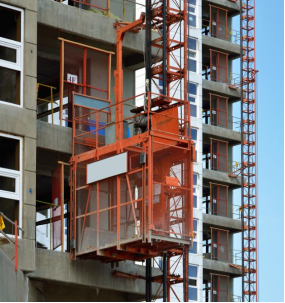
Step-by-Step Installation Process
1. Foundation Preparation:
This has been explained in detail in the previous article, so I will not explain it in detail here.
2. Mast Assembly:
- Section Assembly: Assemble the individual mast sections, ensuring proper alignment and fit.
- Securing Sections: Secure the mast sections together using high-strength bolts and nuts, tightening them to the manufacturer’s specifications.
- Vertical Alignment: Verify the vertical alignment of the mast using plumb lines or laser levels to ensure smooth and efficient operation.
3. Platform Installation:
- Mast Attachment: Attach the platform to the mast using robust brackets and bolts, ensuring a secure connection.
- Safety Features: Install safety barriers, gates, and other safety features to prevent accidents and falls.
- Leveling and Securing: Ensure the platform is level and securely attached to the mast to prevent tipping or swaying during operation.
4. Counterweight Installation:
- Mast Attachment: Attach the counterweight to the mast, typically on the opposite side of the platform.
- Weight Adjustment: Adjust the counterweight to balance the load of the platform and ensure smooth operation of the hoist.
5. Winch and Motor Installation:
- Mounting: Mount the winch and motor to a sturdy structure, such as a beam or column, using appropriate fasteners.
- Power Connection: Connect the winch and motor to the power source, ensuring proper wiring and compliance with electrical safety regulations.
- Control Cable Connection: Connect the control cables to the winch and motor, ensuring correct wiring and functionality of the control system.
6. Electrical Wiring:
- Wiring Installation: Install the electrical wiring for the hoist’s control system, including power cables, control cables, and safety devices.
- Power Supply Connection: Connect the wiring to the power supply, ensuring proper voltage and amperage.
- Control Panel Connection: Connect the wiring to the control panel, ensuring correct connections and functionality of the control buttons and switches.
- Safety Regulations: Ensure compliance with electrical safety regulations, such as proper grounding, circuit breakers, and cable insulation.
7. Testing and Commissioning:
- Thorough Inspection: Conduct a detailed inspection of the entire hoist system, checking for any defects, loose connections, or safety hazards.
- Load Testing: Perform load tests to verify the hoist’s capacity and ensure it can safely handle the intended loads.
- Safety Feature Testing: Test the emergency stop, overload protection, and other safety features to ensure they function correctly.
- Operator Training: Provide comprehensive training to operators on the safe operation of the hoist, including emergency procedures and maintenance guidelines.
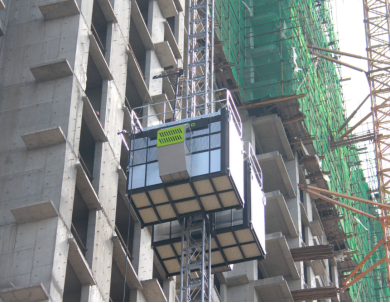
Wrapping Up the Installation Process
Successfully installing a construction hoist involves a meticulous process that requires careful planning and execution. From site preparation and mast assembly to electrical wiring and safety testing, each step is crucial to ensuring the hoist’s safe and efficient operation. While this guide provides a comprehensive overview of the installation process, it’s important to emphasize the importance of professional expertise. Construction hoists are complex machinery that should only be installed and maintained by qualified professionals. By following industry best practices, adhering to safety regulations, and seeking professional assistance, you can ensure the safe and reliable operation of your construction hoist.
Related Products
Passenger and Material Hoist
Use high-quality steel
Simple and cost-saving
SC Series Frequency Conversion Hoist
Frequency conversion control system.
Smooth starting and braking, less mechanical…
Curve Hoist
Self-Leveling
Versatile Applications
Adjustable Cage
Industrial Construction Hoist
Flexible
Multifunctional
Easy to operate

